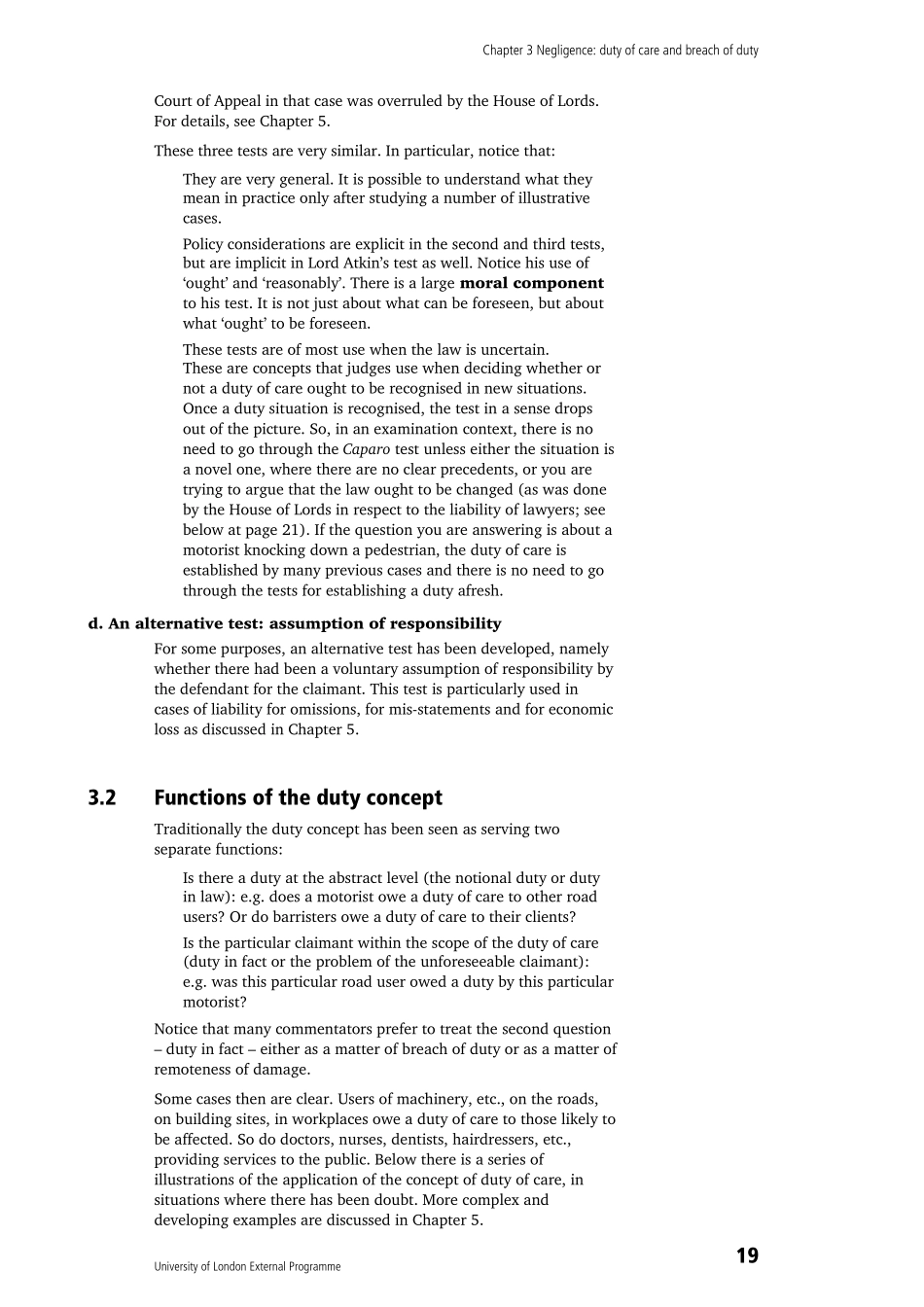University of London External Programme 17 Chapter 3 Negligence: duty of care and breach of duty Contents Introduction 17 3.1 Duty of care 17 3.2 Functions of the duty concept 19 3.3 Breach of duty 23 Introduction This chapter introduces the first two elements in establishing an action in the tort of negligence. Did the defendant owe the claimant a duty to take care? Was the defendant in breach of that duty? Learning outcomes By the end of this chapter and associated readings, you should be able to: explain the concept of duty of care and its purposes identify the various tests that have been suggested for the existence of a duty of care discuss the duty concept in the context of some particular situations, namely, controlling others, duty of lawyers and duty to unborn children describe the standard of care required of defendants both in general and in respect of particular skills Essential reading Markesinis and Deakin, pp.85–95, 167–184 Murphy, pp.171–181, 231–263 Winfield and Jolowicz, pp.103–134, 190–208 Lunney and Oliphant, pp.90–100, 107–129, 139–187. 3.1 Duty of care The duty of care concept has at least two purposes. The first is to provide an overall framework for the huge variety of situations in which liability may arise. For centuries the law has recognised relationships in which one person owes a duty to another. What was lacking was a general principle of which the various cases Law of tort 18 University of London External Programme were illustrations. The second purpose is one of limitation, setting the boundaries within which one person could be liable to another for the consequences of careless behaviour. 3.1.1 Finding a general test A number of attempts have be...


